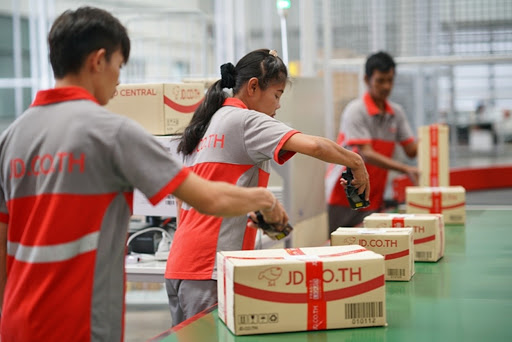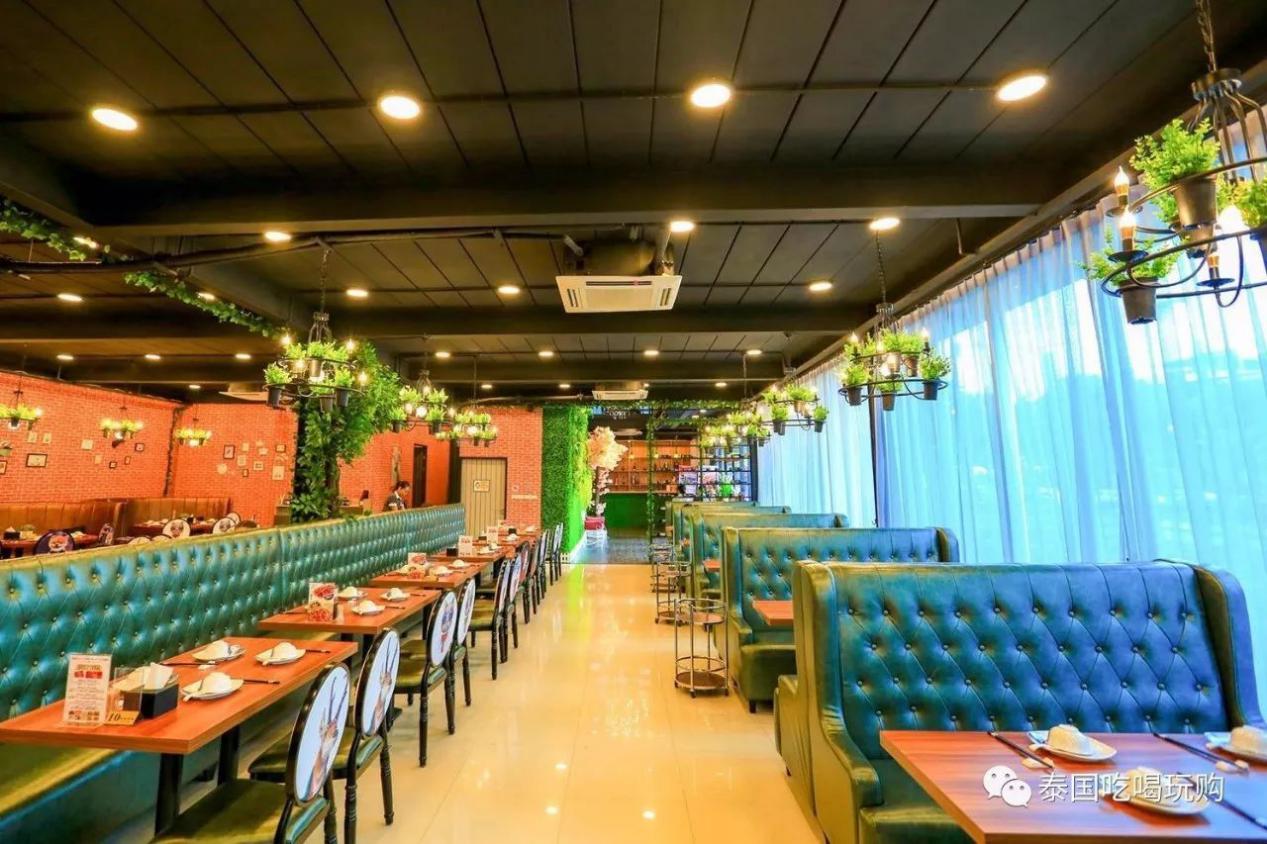

(Written by Dulyapaween Kronsaeng / Translated by Chen Zhiying)Five years ago, no one would have thought that restaurants, logistics, and well-known technology brands from China would enter Thailand. With the change of China’s attitude to investment institutions in Thailand, all these will grow continuously.
Investment Prospects and Opportunities in Thailand in the Post-COVID-19 Era released by the Siam Commercial Bank (SCB) in Thailand showed that Thailand would usher in a new wave of investment from China after the epidemic. This time, China would shift its focus from expanding production base to looking for opportunities in Thailand and ASEAN. In addition, the scale of investment projects tends to be smaller and more diversified. At the same time, it would distribute the projects to service and technology industries.

After the epidemic, the influx of Chinese capital into Thailand exceeded expectations
In the past, China has not ranked in the top five of Thailand’s investment list. However, in the past two to three years, China’s investment in Thailand has shown linear growth. From 2018 to 2019, China has become Thailand’s largest source of investment for two consecutive years, and the investment from China has been growing significantly.
Mr. Manop Sangiambut, the First Executive Vice President of SCB, Thailand, said that although the investment slowed down during the past year due to the epidemic, an online survey of 170 Chinese-funded enterprises under the Investment Prospects and Opportunities in Thailand in the Post-COVID-19 Era found that about 2/3 of the interviewee planned to increase their investment in Thailand in the next two years.
It is worth noting that 60% of the Chinese investors have business or investment in Thailand, and the other 40% are potential investors who have not yet expanded their business in Thailand.
Senior executives in the SCB forecast, when the epidemic was under control, direct investment from China to Thailand would be more than expected. Part of the reason came from the China-U.S. trade frictions and the severe epidemic situation in Europe and the US. This would lead to a large number of Chinese enterprises transfering their investments to the ASEAN region, let alone Thailand, one of the target investment countries of Chinese enterprises.
The survey showed that China’s investment structure would undergo major changes, from orienting export to digging deep into the Thai market. One reason is that Thailand is a potential market located in the strategic position of ASEAN and it has become the center to expand businesses in ASEAN. Another reason is Thailand’s policies are attractive. However, low cost alone is not the major factor for Chinese investors to invest in Thailand.
The scale of investment tends to be small and diversified
The results also showed that Chinese enterprises in Thailand would transform to investing in small-scale projects instead of focusing on large-scale and export-oriented industries. And the investment direction would become increasingly diversified and be related to many industries, especially service, technology, and logistics.
“Five years ago, no one would have thought that more and more Chinese chain restaurants would open in Thailand and gain such popularity. With the growth of Chinese enterprises’ investment in Thailand, the development of Chinese law firms has also been promoted.” Mr. Manop listed the new service industries in China that have just entered the Thai market. The survey showed that 57% of the interviewee are interested in investing in Thailand in the next two years. They wanted to invest in small projects of less than 500 million baht (about RMB 100 million yuan). However, in the past, they were more likely to invest in projects of more than 1 billion baht (about RMB 200 million yuan), such as tire industry and solar panels.

To avoid the impact of trade frictions, Chinese small and medium-sized enterprises chose to move their production bases overseas. And the close integration of upstream and downstream supply chains drove the miniaturization of investment projects. The initial focuses of Chinese enterprises are to know more about the market. The service and technology industries still are target industries for them to increase investment.
Opportunities and challenges brought by China’s investment in Thailand
Although the influx of Chinese capital will create employment and bring knowledge and technology to promote economic development, opportunities and challenges coexist for Thai enterprises.
“In the future, more and more Chinese enterprises will look for investment opportunities in Thailand and invest in many industries. From another point of view, that means Thai enterprises will gain opportunities to become the partners of Chinese enterprises and provide services for them,” said senior executives from the SCB.
Of course, business competition in Thailand will become more intense. In the past, China’s investment in Thailand mainly focused on export-oriented industries and did not involve the business chain, supply side, and demand side of Thailand.
As Chinese enterprises dig deep into the Thai market, Thai enterprises may face stronger market competition while seeking stronger partners, because most Chinese investors have a keen sense in business and boast advantages in capital and technology and rich experience in participating in fierce competition. Over the past five years, more and more Chinese brands have been internationalized, and Chinese products are highly recognized by consumers in terms of quality, design, and technology.
To meet these challenges, Thai enterprises need to fully understand the changes in the environment and make adjustments, improve production through technological innovation, and seek cooperation with Chinese investors to tap new business opportunities. Of course, the advantages of Thai enterprises lie in their understanding of the domestic market, laws, and regulations, as well as their ability to find raw materials. But to master Chinese and learn Chinese culture will help them and migrant workers better grasp the new round of Chinese investment opportunities.
Insight into China’s investment in Thailand
Since 2015, investment applications from China have increased year by year. In 2018, China became the largest source country of investment applications for the Thai Board of Investment. From 2017 to 2019, China’ investment ranked second with a total amount of 345 billion baht (about RMB 74.2 billion yuan), followed by 366 billion baht (about RMB 78.7 billion yuan) of the United States.
If we exclude the large-scale investment of more than 300 billion baht (about RMB 60 billion yuan) from Exxon Mobil, China will become Thailand’s largest source of investment. From the perspective of industry classification, China’s total investment applications are mainly concentrated in three categories: services and public utilities; metal products, machinery, and transportation equipment manufacturing; minerals, ceramics. and basic metals.
Despite the impact of the COVID-19, the investment application in China dropped 53% from Jan. to Sept. in 2020. Its total investment amount was 21 billion 300 million baht (about RMB 4 billion 600 million yuan), but it still ranked second, after Japan’s 37 billion 500 million baht (about RMB 8 billion 100 million yuan). In terms of the total approved investment projects, China is the largest, with a total investment of 51.5 billion baht (about RMB 11.1 billion yuan), an increase of 20%, exceeding that of 47.6 billion baht (about RMB 10.2 billion yuan) of Japan. The industries gaining the most investment are mainly concentrated in metal products and machinery (42%), minerals and ceramics (35%), electrical and electronic products (8%).

It is worth noting that from Jan. to Sept. 2020, compared with the same period in 2019, China began to expand investment in electrical appliances, electronic products, services and public utilities, light industry, and textile industry, while heavy industries such as metals and machinery declined.
As for foreign investment, China’s direct investment in ASEAN countries including Thailand continued to grow from 2015 to 2019. In 2019, the direct investment in ASEAN accounted for 5%, while that in Thailand was 0.3%.
China and Thailand have always maintained friendly relations and good bilateral trade. Although China has increased investment in Thailand, the proportion is still relatively low, while its investment in CLMV countries (Cambodia, Laos, Myanmar, and Vietnam) is 3% -4%.
“We believe that China’s investment in Thailand still has room for growth. CLMV countries have always maintained close trade relations with China since their infrastructure is highly in need of Chinese investment, and the cost is relatively low. But it is believed that Thailand will be able to attract more Chinese investors to invest in the future by virtue of its potential and advantages, such as perfect infrastructure, labor reserve, and technology,” said Mr. Manop.
Source: Thai-ASEAN Panorama
桂ICP备14000177号 Copyright@2006-2013 Guangxi China-ASEAN Panorama Magazine Agency Co., Ltd. All Rights Reserved